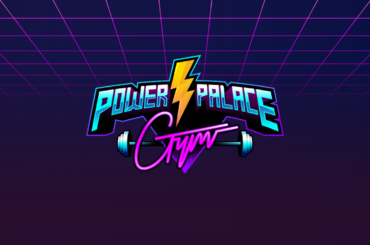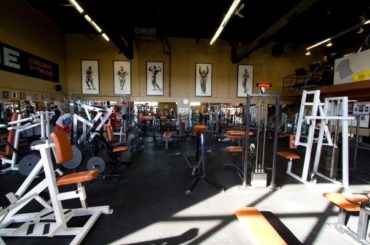The web TV app my company has created is promising a lot to YouTubers. We’ve boasted that it allows YouTubers to operate with the same business model as real broadcasting networks, for just a one-time payment of $200 for a Premium Station.
But how does that *really* work, you may wonder?
The point of this article is to serve as a basic guide on how I, as the designer of the app, intended it to be used. It is my hope this will spark further creativity in the video creator community and lead to our application being used for things I may not have originally envisioned; which is great, that means the app will take on a life of its own.
But yes, this is a guide on how any YouTuber can buy a $200 Premium Station and become their own TV network in the cloud. All you need is a….
Team
It is important to remember that television, like film, is a collaborative art-form. Although we strive to make the Martell TV system easy enough that a single person can run an entire Station by themselves, the reality is that a jack of all trades is usually a master of none.
At some point you’ll want some key individuals to be involved in the operation of your Station, and they each have very important jobs to do.
These individuals are,
- General Manager
- Director of Programming
- General Sales Manager
- Director of Marketing
There is a larger list of jobs that make up a traditional broadcasting Station here but for now this guide will only focus on the most critical roles which are the ones I’ve mentioned above. If you want some in-depth explanation of all the jobs that are involved in a TV Station, read the National Association of Broadcaster’s Guide to Careers in Television PDF.
The basic idea is that a group of YouTubers who each have Shows can divide up these tasks amongst themselves and help carry the burden.
I recommend that you think of a Station as a collab YouTube channel where everyone gets to keep their videos on their personal YouTube channels without needing to reupload to a specific YouTube channel. If you think that way, it’ll be easier to start up.
1. General Manager

This is the guy in charge of ensuring everything happens as it should. This is probably the person who bought the Station from us. The General Manager is, for the purposes of this guide, the CEO of the Station.
There is honestly not much special about this role that is so different than running any other kind of business so I won’t devote too much space to re-iterating what any decent business book or course will tell you, but you should be familiar with what everyone at the Station needs to do so you can ensure the quarterly goals are reached.
2. Director of Programming

The Director of Programming may be the most important person at the Station, as their job deals the most directly with the audience. As far as your watchers are concerned, the Director of Programming’s vision *is* the Station.
Organize your lineup
This is the most important task for whoever in your team will be designated as the director of network programming. They must have impeccable taste when it comes to content selection choices, and fully understand the audience. There’s an article at HowStuffWorks that describes how this position works at major TV networks, and it won’t be too different for your web TV Station.
http://igg.me/at/youtube-network-app/x/215096
A television Station is not a YouTube channel. You should be scheduling multiple Shows that regularly air at certain times of the day based on who is most likely to be looking at the guide at that time of day. And you don’t need to have a Radio-Film-Television degree to understand how to schedule content by the hour. If you’ve ever watched cable TV and paid even the slightest attention to how a daily network scheduling works in the pros, this is who is being targeted by your typical TV station on an average day, at what time of day:
12 AM – 6 AM : Insomniac college students, retirees, and night security guards.
6 AM – 8 AM : Children, teens and adults eating breakfast before going to school / work.
8 AM – 3 PM : Stay at home moms / dads and children aged 0 to 6.
3 PM – 4:30 PM : Children aged 7 to 12; teens aged 13 to 16.
4:30 PM to 8 PM: Adults and teenagers.
8 PM to 12 AM: Adults.
Of course this basic template doesn’t strictly apply to *every* TV Station; Cartoon Network, for example, targets both pre-teens and teens from 3 PM until midnight, and will target both insomniac teens and adults until the wee hours of the morning before they start airing old 80’s and 90’s cartoons for nostalgic adults to watch with their very young children before work. But you get the basic idea, right? Of course with the Martell TV system once content has been released ‘live’ it can be watched on demand, and viewers can even scroll-back the timeline to watch shows released earlier in the day they might have missed. But it’s still important to follow the basic scheduling rules of television broadcasting because the job of the hourly schedule feed is to help people discover content, and knowing who is *most likely* to be looking at your Station at a certain time of day is important. The smartest thing to do is organize certain hours into what is called a ‘programming block’. Examples of very effective blocks have been The Disney Afternoon (a two-hour block aimed at children airing from 3 PM to 4:30 PM), TGIF (family-friendly prime time programming) and ‘Must See TV‘ (NBC’s version of TGIF).
The goal of all programming is to create ‘flow‘. That is, the objective is to retain audience attention from program to program. It is the proper execution of flow that defines the very medium of television, and it’s what makes the experience of broadcast so very different than binge watching Netflix.
If you really want to, you can read an exhaustive paper about ‘flow’ in the modern era here. It’s a tad academic and your mileage will vary on how useful these kinds of papers are for creating actual lineups.
You also need to familiarize yourself with broadcast strategies. Here’s a great article on Wikipedia about the topic. Hammocking your original content in prime time slots is going to help you use the ‘flow’ to build new audiences for shows you want to pilot or simply increase brand awareness for. You can also do seasonal programming events; Christmas and Halloween are obvious but you can always invent your own holidays like Discovery has done for Shark Week.
You can read an excellent in-depth primer on the craft of media programming by downloading this PDF.
Station Branding
Station branding is an essential aspect of maintaining ‘flow’ in your schedule.
It is a’bit of a misconception that TV Stations always air wholly original programming. Historically the overwhelming majority of broadcast content is re-runs that have entered what is called ‘syndication’. The Station will produce some original content to air during prime time hours (usually news programs) but for the most part re-runs constitute the vast majority of content a typical TV station airs during the day.
What you will probably end up doing is scheduling a lot of content that may not actually belong to you. It’s not piracy; when a content owner uploads videos to YouTube, they agree to certain terms of service set by YouTube. Among these are that other people will be embedding your videos into their own websites and apps, and if the content owner doesn’t want that to happen the content owner must check the ‘No embedding’ button on the video upload (This, of course means that even the content owner can’t embed the video into their own websites, so they pretty much never do check that box).
So basically, chances are a lot of your Station’s content will be popular shows from YouTube that you are syndicating. For example, I made my own version of MTV on www.powerup.tv and it’s 100% legal to do.
(Note: Although you can use our system to freely schedule any YouTube video, it’s best to try to get permission from the creators if at all possible and also get them on board with your Station. They have audiences that can increase viewership for your overall Station, and if your Station / website has enough viewership they may even be willing to pay you to feature their videos in your timeslots via brokered programming).
This is why Station IDs are so important for a Station to separate itself from other Stations that may carry the same content. Station Identifiers, also known as interstitials, or even ‘bumps’ are a crucial element to the operation of a TV Station. Originally they were simply aired as a FCC requirement for Stations to regularly inform viewers of what Station they were watching but creative applications were invented over the years to make Station IDs part of the marketing effort of the Station to help develop its unique branding in the hearts and minds of consumers. Particularly effective and iconic Stations ID examples are:
- MTV’s bumps from the 80s / 90s, such as ‘I want my MTV’
- AdultSwim’s bumps , especially the black and white ones.
- Nickelodeon’s bumps from the 80s.
- Disney Channel IDs from the 80s.
- HBO’s bumpers.
I know, I know. I’m pointing at a lot of stuff from three decades ago. But there is a reason I’m doing so; this was the heyday of TV, when it was in its greatest era. This was the birth of cable, and when the traditional TV networks had to start coming up with brilliant marketing strategies to retain market share.
It’s due to these classic branding indents that a lot of these Stations were able to effectively craft a message and resonate with new audiences to become the house-hold names we know today. Remember, it was not until the advent of cable that the Big Three TV networks lost market share, and much of it is due to the unique branding of the cable Stations that emerged in the early 80s. Learn from it.
Where Can You Get Bumpers? If you are pressed for time and money, you can always use templates from sites like VideoHive. I recommend Broadcast Design TV Channel – Full Package as it only costs $30 and gives you pretty much any kind of indent you’d need for a TV Station.
Wrap-around segments are another kind of Station ID, and can be as simple as the Video Jockey segments from the early days of MTV. Another example is the horror host shows aired at late night. To make your own version of this using our system, just grab 10 minutes of a free to watch horror film from YouTube, insert your horror host wraparound segment, and then schedule the next 10 minutes of the horror film. Rinse and repeat and you’ve basically done exactly the same thing that your local TV Station does (except, of course, that you don’t have to pay a licensing fee because they waived that right when they decided to upload their library to YouTube. Ha!).
If you think about it, scheduling wrap-arounds and Station indents into the feed of video shows is not that different than editing a video in something like Final Cut or Premiere. You have a collection of video segments, and you can organize them to play in a pre-set order.

Other examples of wrap-around segments are,
- NBC’s The More You Know
- Time for Timer from the ABC Saturday morning cartoon block of the 70s and 80s.
- Schoolhouse Rock, again from ABC’s Saturday morning cartoon block.
I really cannot stress enough how important it is to have good original branding. There are reasons people have re-uploaded these old segments to YouTube, and that they’ve received tens of thousands of views without any marketing; people remember good Station branding for years to come. There is an emotional attachment to it. It dwells in their hearts.
3. General Sales Manager

There is really nothing so special about this role that someone need any kind of special TV-specific training to do the job, but it is vital to the success of the Station.
You are a salesman. Your job is simple; sell ad inventory against the programmed TV shows, and that includes not just commercial breaks but also integrated brand sponsorships in the original programming the Station produces, including its wrap-around segments.
You can also sell unused space as brokered programming to brands or even other YouTubers who want to tap into the audience of your Station; you can do paid programming.
To sell ads, you’ll need to reach out to ad agencies with a pitch deck. Here’s an example of the pitch deck reddit uses to solicit brands.
You should put your pitch deck as a downloadable PDF on your Station’s website somewhere, probably around the Contact Us page. You should also email it to every ad agency in the world.
Beyond that, if you have a local audience you should bust out the Yellow Pages / Yelp listings and start cold-calling businesses to sell them ad inventory. That is what real TV Station sales staff do.
What you do may not be as glamorous as the folks doing the creative stuff, but what you do is what generates money for the Station to operate. You may or may not get a bonus for good performance, or a commission; that is up to how the General Manager is running the show.
4. Director of Marketing

Your role is vital. You shape the message and brand identity of the Station.
Your job is to help the Director of Programming create Station IDs that will appeal to the target demographics. You also need to help manage the mailing list for the Station, and all the social profiles like Facebook, Twitter, YouTube, Instagram, etc
You should probably also help with PR, too. News articles from blogs about your upcoming show lineup will be critical in your buildup so that your Station gets the view numbers required for your Sales team to sell ads for the Station.
You’ll want to create a Press Kit for your website so that interested journalists can just download all the info they need to write a report. Creating press releases every month is also a good idea.
Honestly there isn’t anything super-specific you need to know about marketing a Station that isn’t applicable to marketing any other online product or business. Just consider the Shows in a Station to each be a product line, and market them individually
.
Conclusion
This is just a short guide I put together to give folks a crash-course to fill in knowledge gaps on how to run a TV Station. There isn’t a lot of technical instruction here because, to be honest, our app is super easy to use. If you’ve seen the demo videos on the Indiegogo page, the scheduling is drag and drop with a WYSIWYG editor.
Want to buy a Station? Here’s the project below.





